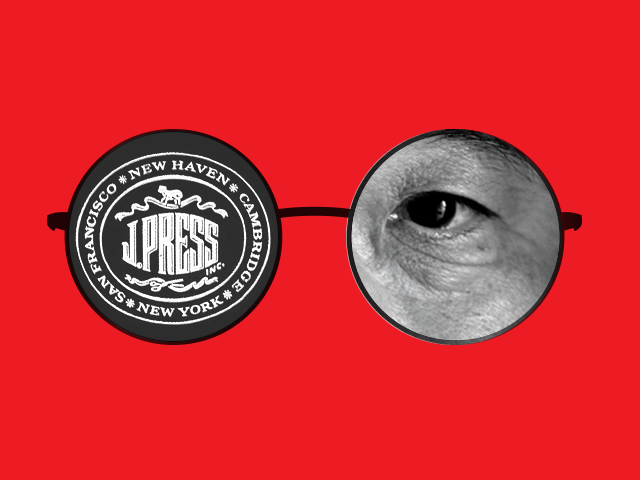In my nostalgic reminiscing about the National Diet Library, I forgot to introduce one of the coolest parts of my new essay over at Neojaponisme, “Murakami Haruki’s Advertorial Short Stories”: While I was writing it, I found another cut in the translation of Hard-boiled Wonderland and the End of the World.
Toward the end of the novel, after escaping from the subterranean nightmare, Watashi heads out to get dressed up for a date with the Librarian. The scene has stayed in my mind ever since my earliest reading 15 years ago, perhaps because of Murakami’s fashion sense: Watashi picks out a burnt orange shirt and navy blazer.
So when I needed an example of Murakami’s attention to fashion in his fiction, it was the first scene that came to mind, and I had a feeling that the official English translation might have been altered by Birnbaum (or his editor).
As luck would have it, I was right. This was like the lamest Babe Ruth calling the lamest home run he ever hit in an empty stadium, but privately I took a victory lap and pumped my arm like Kirk Gibson as I did. Check out the English translation:
I took the subway to Ginza and bought a new set of clothes at Paul Stuart, paying the bill with American Express. I looked at myself in the mirror. Not bad. The combination of the navy blazer with burnt orange shirt did smack of yuppie ad exec, but better that than troglodyte. (342)
And here’s the original followed by my translation from the piece:
私はまず電車で銀座に出て〈ポール・スチュアート〉でシャツとネクタイとブレザーコートを買い、アメリカン・エキスプレスで勘定を払った。それだけを全部身につけて鏡の前に立ってみると、なかなか印象は悪くなかった。オリーヴ・グリーンのチノ・パンツの折りめが消えかけているのが多少気になるが、まあ何から何まで完全というわけにはいかない。ネイビー・ブルーのフラノのブレザーコートにくすんだオレンジ色のシャツというとりあわせはどことなく広告会社の若手有望社員という雰囲気を私に与えていた。少なくともついさっきまで地底を這いまわっていて、あと二十一時間ほどでこの世界から消えていこうとする人間には見えない。 (500)
First, I took the train to Ginza and bought a shirt, a tie, and a blazer at Paul Stuart, paying for it with my American Express. I put it all on and looked at myself in the mirror. Not bad. I was a little worried that the center creases in my olive chinos had started to fade, but I guess not everything had to be perfect. And the combination of the navy blue flannel blazer and burnt orange shirt did make me look a little like a young employee at an advertising firm. But at least I didn’t look like someone who’d just been crawling around in the sewer and only had 21 hours left before he disappeared from the world.
Personally I love Birnbaum’s rendering. It’s so concise. He probably could have better captured Watashi’s hemming and hawing, which is funny because these are the kinds of things he’s worried about just before he’s about to die, but you have to love troglodyte and yuppie ad exec. Just perfect.
This passage is from Chapter 33, far ahead of where I am now in the blog, but I should have more posts soon and be able to extract myself from the endless Chapter 21.

